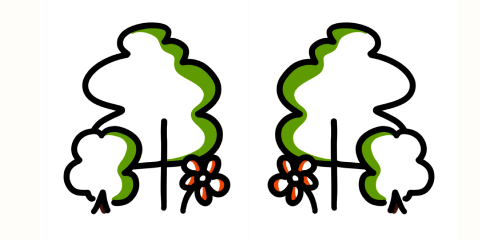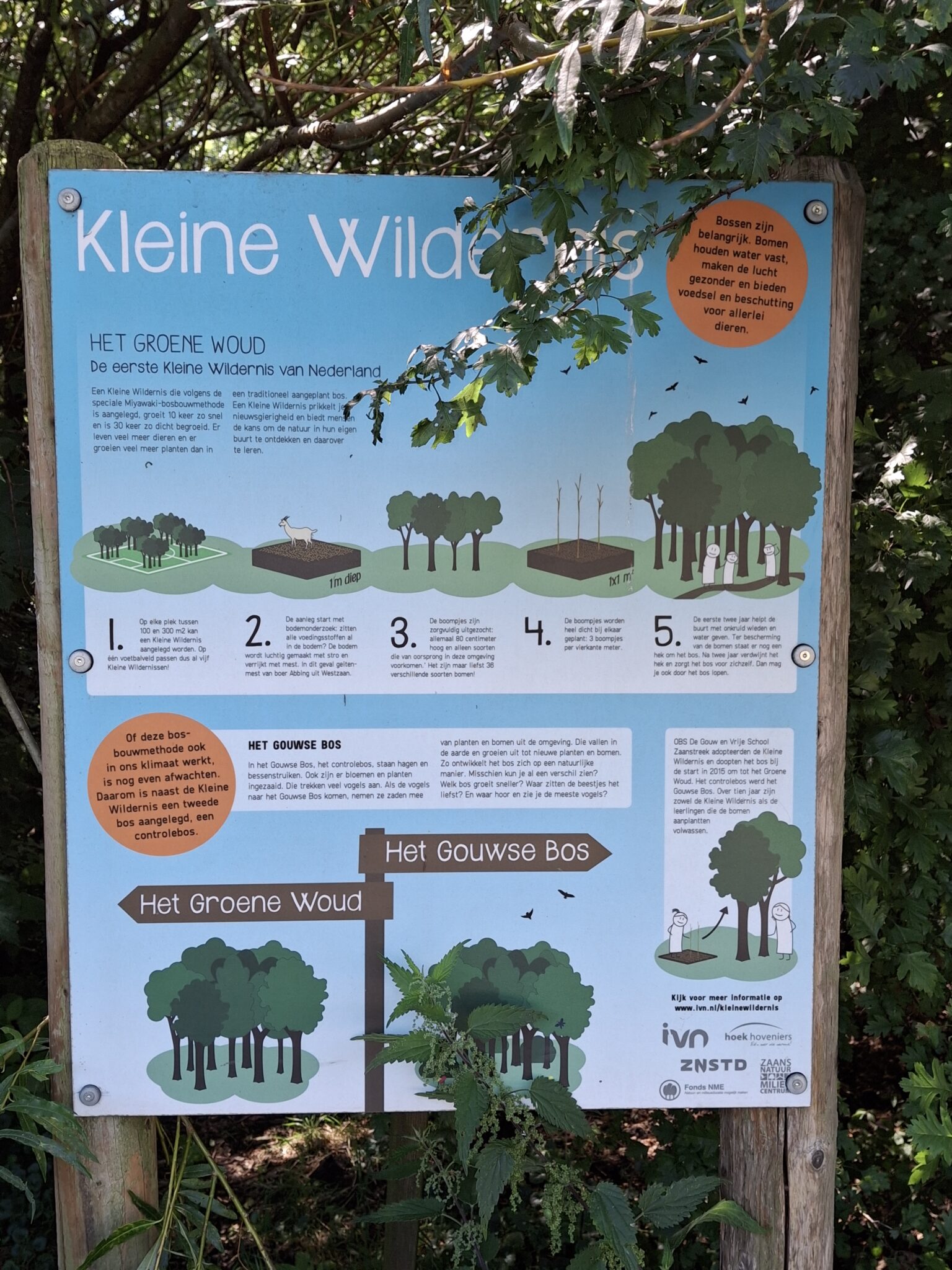Ten years later
Next to the Tiny Forest, a conventional tree planting was done at the same time, without specific soil preparation and using standard planting density. This creates a unique opportunity to directly compare the two forests. Now, in 2025, ten years after planting, you can notice a big difference between the Tiny Forest and the regular forest.
First, in terms of height: the Tiny Forest reaches up to 20 metres, whereas the regular forest grows to about 10 metres.
Second, there is a clear difference in density: the Tiny Forest is almost impossible to enter, as it is packed with trees and shrubs across all forest layers. In contrast, the regular forest is easy to walk into because the canopy is dense, but below it, the forest is dark and open.
Third and finally, a ground layer of mosses and herbs is developing in the Tiny Forest, thanks to the light that reaches the forest floor — whereas the ground in the regular forest is almost bare.
So, a visual analysis leads to the conclusion that the Tiny Forest in Zaandam is more biodiverse, has more structural layers, and is a better-developed microforest. Since the goal of a Tiny Forest is to create fast-growing, dense forests in urban areas, we can say: it works.








